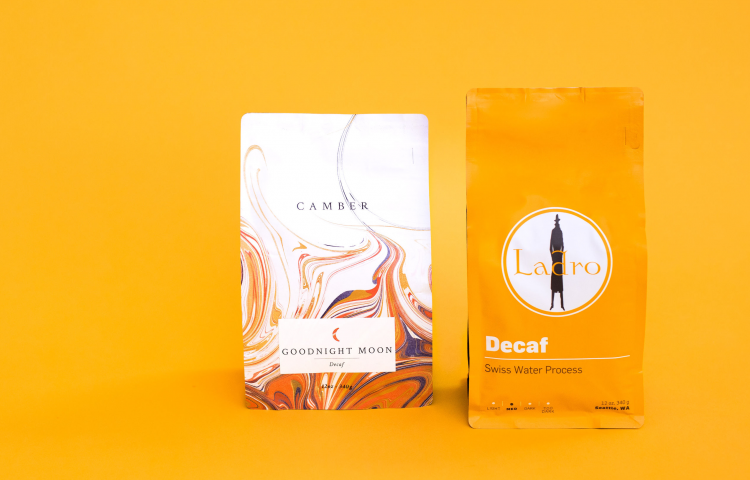Join us as we unravel the secrets of decaf coffee. Each sip holds a story, a testament to the farmers and innovative methods that make contemporary decaf coffee an experience worth savoring.
Decaf Coffee doesn’t have the best reputation, and not all are created equal. Back in the day, the decaffeination process required using chemicals such as benzene, trichloroethylene, dichloromethane, chloroform, or methylene chloride. Most of these chemicals and methods have been deemed harmful, carcinogenic, or toxic. Fortunately, we have moved on to safer, more natural methods that better suit the intimate act of consumption. It’s time to remove the stigma and embrace delicious, jitter-free, decaf coffee with our favorite processing methods.
How is Decaf Coffee Made?
The decaf process takes place well before any roasting or brewing occurs, and there are two main types: Solvent and Non-Solvent Based Decafs. Non-solvent-based decafs use 100% water to extract caffeine from the beans and are usually sold as Swiss Water or Mountain Water Decafs. The difference lies in the location of each facility. Mountain Water processing takes place in Mexico using water from the Pico de Orizaba Mountain while the Swiss Water process, which originated in a small Swiss plant in the 1930s, today takes place at a single facility near Vancouver, British Columbia, using water from Canadian coastal mountains. Both use essentially the same process to extract caffeine from the coffee, and both claim to get rid of 99.9% of caffeine.
Solvent-based decafs are those in which the caffeine is removed from the beans with the help of a chemical solvent, such as methylene chloride or ethyl acetate. We’re not the biggest fans of the methylene chloride decafs, but the natural ethyl acetate processed decafs have us excited about brewing coffee later in the day and into the night. In this Sugarcane Ethyl Acetate (EA) Process, coffee is placed in a solution of water and Ethyl Acetate, a naturally occurring compound and solvent derived through the fermentation of sugarcane. Raw, unroasted coffee, often called “green coffee” or “green beans”, is submerged in the EA solvent, which naturally bonds to the salts of chlorogenic acids within the coffee, allowing for the extraction of caffeine.
Decaf Methods Defined
Carbon Dioxide (CO2) Process
In this newer method, green coffee reacts with highly compressed carbon dioxide, which behaves like a gas AND a liquid. The beans are soaked in compressed carbon dioxide, and the caffeine is eventually removed from the CO2 through a charcoal filter, like in the water-processed methods.
Methylene Chloride (MC) Process
Green coffee is soaked in hot water to begin extracting its caffeine. A methylene chloride (MC) solution is added to help bond to the remaining caffeine, and both are removed, leaving us with a coffee with very little caffeine. MC Decafs don’t have the best reputation, are fairly cheap, and can taste thin, flat, or papery, so we avoid them. You won’t find this on our site.
Swiss Water Process (SWP)
In this process, green coffee is soaked in water, and a carbon filter is used to help capture and remove the caffeine. All processing takes place in Vancouver, B.C. using water from the Canadian mountains.
Mountain Water Process (MWP)
Similar to the Swiss Process, beans are decaffeinated with the help of water and a carbon filter. These coffees come to us from a facility in Mexico rather than Canada.
EA Sugarcane Process
Beans are placed in a solution of water and Ethyl Acetate, a solvent that naturally bonds to the salts of chlorogenic acids within the coffee, allowing for the extraction of caffeine.
Decaf is for Lovers
It’s difficult to say which decaf processing method tastes best. We’ve found that the water-processed decafs tend to produce a cup that favors body and mouthfeel over acidity. In some cases, the EA Sugarcane method better preserves acidity and the more delicate flavor nuances. It’ll come down to your own personal taste preferences in the end.
Whether you live by the “death before decaf” mantra or desire a cup that awakens the tastebuds alone, we urge you to try one of our favorites below. After all, decaf is for coffee lovers: it’s all about the flavor and has nothing to do with the effects of caffeine. These offerings might just change your mind about decaf!

